Pilea Involucrata (Friendship Plant) Profile
Written by Iris
Nov 10 2021
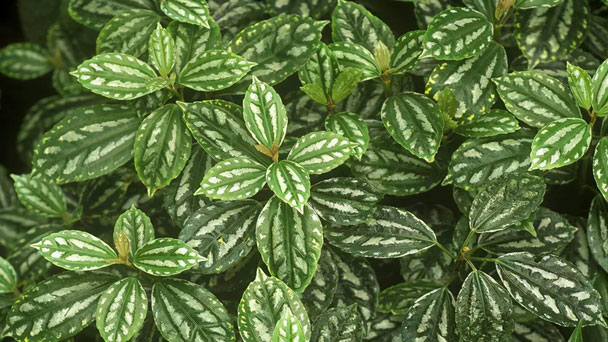
Pilea Involucrata (Friendship Plant) is a kind of ivy that grows in clusters. The trailing function of Pilea Involucrata also adds to its versatility in displaying plants. In terms of stature, Pilea Friendship Plant is quite small. You can expect the Pilea Involucrata to grow to 6 to 12 inches tall. Although, it rarely reaches the high end of the range. It is also a foot wide. While Pilea Involucrata does flower, its oval leaves are its main attraction. The colors range from purple to green and yellow. Since Pilea Friendship Plant is native to Central and South America, these plants are tropical in nature.
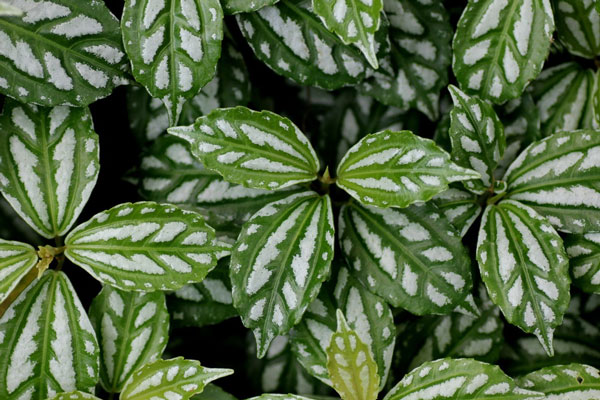
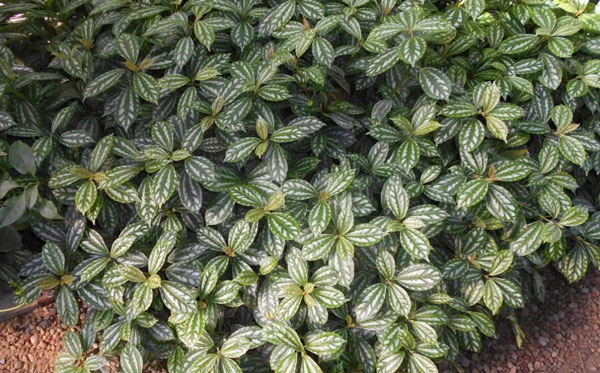
In other words, you will want a more specific pruning. Ideally, you need to select or cut: At least 4 inches long stems. You can make it longer if you want. The idea here is to make the stem long enough so that it can stand upright in the soil. Stems with at least 2-3 leaves. This ensures that the stem you choose is not a "useless". By choosing a leafy stem, you know that it will be able to produce more leaves when planted on its own. Once you have selected the stem, you are ready to cut. Dip the stem end into the root hormone powder. This will speed up the rooting process. Put the stems in a new pot. Fill the rest of the pot, photograph it and put it in the soil. The goal here is to fill the pot with soil and provide stability to the stem. However, don't overpack it. If the media is packed too tightly, it will be difficult for air and water to penetrate the soil. Water soil. Put a plastic bag on the pots and plants. This will increase humidity. Put the pot in a medium light place. These roots will grow out in a few weeks to a month.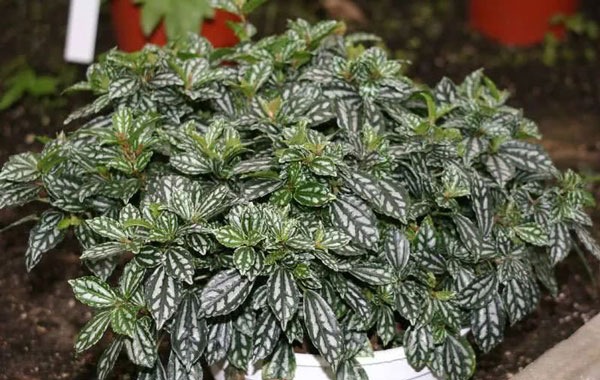
If you go out of this range, always remember that it will tolerate warmer better than cooler. As such, you can err on the side of higher temperatures. But, be careful about letting the mercury drop too far. At best, it will tolerate up to 55 degrees. But once you go under 50 degrees, you’ll start to see it experience some stress.
Thus, it is important to monitor your home thermostat during wintertime. And, avoid placing the plant is corners or area of your home are get colder. Similarly, keep it away from areas with drafts, be it cold or warm air. This includes heaters, air conditioners, windows and doors leading outside the home.
If you live in USDA zones 11 and 12, you’ll be able to grow this tiny plant outdoors as well. This lets you put them in containers along with other plants in a mini garden. They’re likewise amazing ground cover plants.
Besides temperature, the other environmental conditions you need to give your Pilea Involucrata is humidity. It likes moist air. Ideally, you want to keep it somewhere with relative humidity of 50% or higher. And if this isn’t available at home you can either mist it regularly, place it on a pebble tray or use a humidifier to remedy the situation.
Pruning Care
Pilea Involucrata is easy to grow. Pilea Involucrata is a creeping plant that grows in groups. Therefore, the shape of Pilea Involucrata may get out of control because they grow in different directions. Therefore, most of the trimming work will be used for appearance and size control purposes. If you plan to plant Pilea Involucrata in pots, this will mean keeping their shape fairly compact.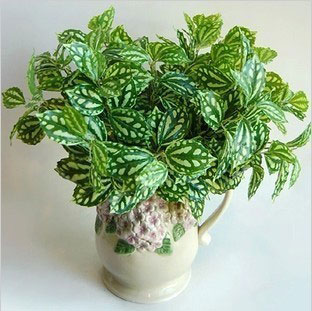
Pilea mollis 'Moon Valley': The moon valley pilea has sawtooth-edged chartreuse leaves with deep texturing like the craters and valleys on the moon.
Pilea microphylla: Also known as rockweed, artillery plant, and gunpowder plant, this species has light green foliage with tiny leaves.
Pilea cadierei: The aluminum plant or watermelon pilea has dark green, oval leaves with four raised silver patches that almost have a metallic look.
Pilea nummulariifolia: This pilea is commonly known as creeping Charlie, a fast-growing evergreen herbaceous perennial that some gardeners consider a nuisance because of its ability to spread.
Pilea peperomioides: Also known as the Chinese money plant, pancake plant, and UFO plant, this pilea features round, dark green leaves on erect stems.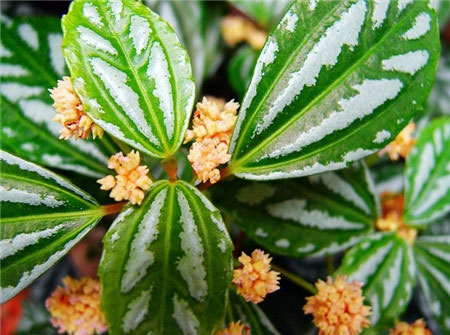
Pilea Friendship Plant PicturePilea Involucrata InfoPilea Involucrata Ecological HabitsPilea Involucrata DistributionHow to Grow Pilea Friendship PlantPilea Involucrata Propagation with DivisionsPilea Involucrata Propagation with Stem CuttingsHow to Care for Pilea Friendship PlantFriendship Plant Light CareFriendship Plant Soil CareFriendship Plant Water CareFriendship Plant Temperature & Humidity CareFriendship Plant Fertilizer CareVarieties of Pilea Friendship PlantPilea Involucrata Common Pests/Diseases
Pilea Friendship Plant Picture

Pilea Involucrata Info
| Scientific Name | Pilea Involucrata |
| Common Name | Friendship Plant, Moon Valley Pilea |
| Origin | South and Central America |
| Light Requirements | bright, indirect light |
| Watering | Give the mix a thorough soaking |
| Soil | Use a rich and very well-draining medium. |
| Temperature | Between 65ºF (18ºC) to 75ºF (24ºC) |
| Fertilizer | Fertilize with a balanced blend |
Pilea Involucrata Ecological Habits
There are over 600 species in the Pilea genus including both trailing and upright, bushy types – the versatile Pilea Involucrata can be grown in either form. This is definitely a foliage plant: its small flowers are easy to overlook. The deeply corrugated, attractively patterned, multicolored leaves are oval with serrated edges and darker longitudinal veins. Their exotic leaf pallet is a mix of bronze and burgundy hues contrasting with wide green outer margins. The undersides have a red to purplish color.Pilea Involucrata Distribution
Pilea Involucrata, or Friendship Plants, is commonly found in South America where it grows as ground cover in semi-shaded floors. The name, Pilea, derives from the Latin word pileus, meaning 'felt cap' due to the calyx covering the achene; involucrata also lends its name to Latin, referring to the 'curled' anthers of its flowers. The genus was first described back in the early 19th century by British botanist, John Sims, during a trip to South America.
How to Grow Pilea Friendship Plant
Pilea Involucrata Propagation with Divisions
Pilea Involucrata (Friendship Plant) produce several basal offsets. When the offsets have a sufficient root system, they can be separated. If possible, water the pilea involucrata offsets before the transplant shock. Transplant shock is a situation that the dry root systems are over-fingered. Take the Pilea Involucrata plant out of its pot and place your fingers close to the nodal junction - soil may have to be removed for better access. Push the chosen offset downwards until you hear a snap. Separate the foliage and its root system away from the mother plant, mentally noting the high risk of damage. Transplant in the appropriate sized pot with a fresh batch of houseplant soil. Maintain evenly moist soil and situate it in a bright, indirect location away from any direct sunlight. After four weeks, treat it like a normal specimen, following the care tips above.Pilea Involucrata Propagation with Stem Cuttings
If you plan on growing more of them, don't discard the trimmings you made while pruning your Pilea Involucrata. Use them to propagate new Pilea Involucrata plants.In other words, you will want a more specific pruning. Ideally, you need to select or cut: At least 4 inches long stems. You can make it longer if you want. The idea here is to make the stem long enough so that it can stand upright in the soil. Stems with at least 2-3 leaves. This ensures that the stem you choose is not a "useless". By choosing a leafy stem, you know that it will be able to produce more leaves when planted on its own. Once you have selected the stem, you are ready to cut. Dip the stem end into the root hormone powder. This will speed up the rooting process. Put the stems in a new pot. Fill the rest of the pot, photograph it and put it in the soil. The goal here is to fill the pot with soil and provide stability to the stem. However, don't overpack it. If the media is packed too tightly, it will be difficult for air and water to penetrate the soil. Water soil. Put a plastic bag on the pots and plants. This will increase humidity. Put the pot in a medium light place. These roots will grow out in a few weeks to a month.

How to Care for Pilea Friendship Plant
Friendship Plant Light Care
In the moderate to bright light, Pilea Involucrata grow well. Pilea Involucrata can also tolerant low light conditions as long as they can be exposed to a few hours of sunlight each day. Similarly, if you don't have a good place to access natural light indoors, you can also use fluorescent growth lamps. Pilea Involucrata doesn't bother with artificial lighting, and it works just fine.Friendship Plant Soil Care
Soil is equally simple. Here, you want to moisturize your Pilea Involucrata and choose well-drained soil. A high-quality potting mixture is very effective as it is rich in organic materials and drains well. African purple blends or peat/peat moss based blends are strongly recommended. Any of them will work just fine.Friendship Plant Water Care
The reason for being a low-maintenance Pilea Involucrata is that Pilea Involucrata is easy to grow without a lot of work. Water is one thing that your Pilea Involucrata is not too picky about. As long as you don't drink much water, Pilea Involucrata will be very happy. Letting it sit in the water for too long will cause the roots to rot. So, if you are unsure, use less water.Friendship Plant Temperature & Humidity Care
Pilea Involucrata is tropical in nature. Thus, it enjoys warm, humid conditions. This is one of the features that make it a good indoor plant (as most homes have similar conditions). That said, the friendship plant does best when the temperature hovers between 65 and 75 degrees Fahrenheit.If you go out of this range, always remember that it will tolerate warmer better than cooler. As such, you can err on the side of higher temperatures. But, be careful about letting the mercury drop too far. At best, it will tolerate up to 55 degrees. But once you go under 50 degrees, you’ll start to see it experience some stress.
Thus, it is important to monitor your home thermostat during wintertime. And, avoid placing the plant is corners or area of your home are get colder. Similarly, keep it away from areas with drafts, be it cold or warm air. This includes heaters, air conditioners, windows and doors leading outside the home.
If you live in USDA zones 11 and 12, you’ll be able to grow this tiny plant outdoors as well. This lets you put them in containers along with other plants in a mini garden. They’re likewise amazing ground cover plants.
Besides temperature, the other environmental conditions you need to give your Pilea Involucrata is humidity. It likes moist air. Ideally, you want to keep it somewhere with relative humidity of 50% or higher. And if this isn’t available at home you can either mist it regularly, place it on a pebble tray or use a humidifier to remedy the situation.
Friendship Plant Fertilizer Care
Like watering, you also want to focus on spring and summer. This is when your Pilea Involucrata is actively growing. During this period, feed with balanced liquid fertilizer diluted to half the strength once a month. Something with an NPK ratio of 10-10-10 will do well. In winter, you can stop fertilizing and let Pilea Involucrata start to rest again before spring arrives.Pruning Care
Pilea Involucrata is easy to grow. Pilea Involucrata is a creeping plant that grows in groups. Therefore, the shape of Pilea Involucrata may get out of control because they grow in different directions. Therefore, most of the trimming work will be used for appearance and size control purposes. If you plan to plant Pilea Involucrata in pots, this will mean keeping their shape fairly compact.

Varieties of Pilea Friendship Plant
There are many types of pileas to choose from, depending on the size and appearance you prefer. Some popular varieties include:Pilea mollis 'Moon Valley': The moon valley pilea has sawtooth-edged chartreuse leaves with deep texturing like the craters and valleys on the moon.
Pilea microphylla: Also known as rockweed, artillery plant, and gunpowder plant, this species has light green foliage with tiny leaves.
Pilea cadierei: The aluminum plant or watermelon pilea has dark green, oval leaves with four raised silver patches that almost have a metallic look.
Pilea nummulariifolia: This pilea is commonly known as creeping Charlie, a fast-growing evergreen herbaceous perennial that some gardeners consider a nuisance because of its ability to spread.
Pilea peperomioides: Also known as the Chinese money plant, pancake plant, and UFO plant, this pilea features round, dark green leaves on erect stems.

Pilea Involucrata Common Pests/Diseases
Due to its ease of care, Pilea Involucrata is less susceptible to pests or diseases. Therefore, compared with other indoor plants, Pilea Involucrata is not a problem in this sector. Few people say that Pilea Involucrata still encounters pests like beetles and spider mites. In addition, leaf spot disease and stem rot may occur. Therefore, it is important for Pilea Involucrata to be thoroughly observed with other plants.Latest Updated
- Benefits of Bugleweed - 7 Science-backed Health Benefits
- Bugleweed Dangers & Side Effects - Is It Poisonous?
- How to Plant Evergreen Trees - What You Should Know
- When to Plant Evergreens - Grow Guide for Evergreen Trees
- 12 Wonderful Evergreen Shrubs for Your Garden
- 12 Popular Evergreen Plants with Pictures for Beginners
- When And How To Prune A Lilac Bush Like a Pro
- How to Grow & Care for Lilac Vine (Hardenbergia Violacea)
- Japanese Lilac Tree (Syringa Reticulata) Care & Propagation Guide
- Shumard Oak Pros and Cons - What to Know
Popular Articles
- Winter maintenance of Antirrhinum Majus
- How to Grow Terminalia Mantaly Tree
- How to Grow and Care for Crossostephium Chinense
- How to grow Antirrhinum Majus in spring
- Peristeria Elata (Dove Orchid) Profile: Info & Care Guide
- Underwatered Snake Plant (Sansevieria Trifasciata) - Signs And How To Fix
- How to Care for Brazilian Jasmine Plant (Mandevilla Sanderi)
- How to Grow & Care for Graptopetalum Purple Delight in Summer
- Rosa Chinensis (China Rose): Plant Growing & Care Tips
- How to Care for Baby Sun Rose (Aptenia Cordifolia)